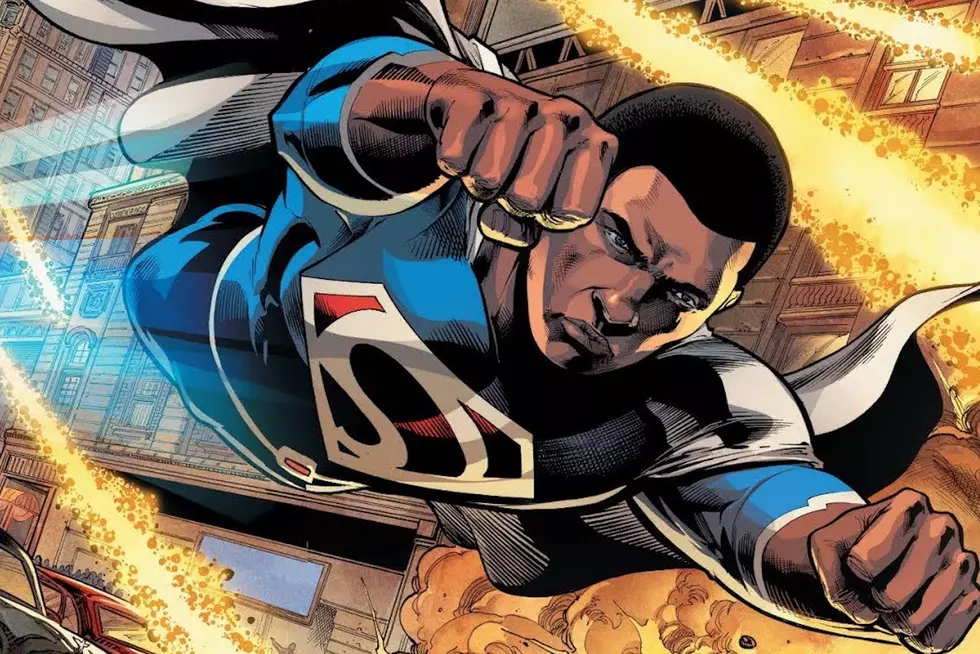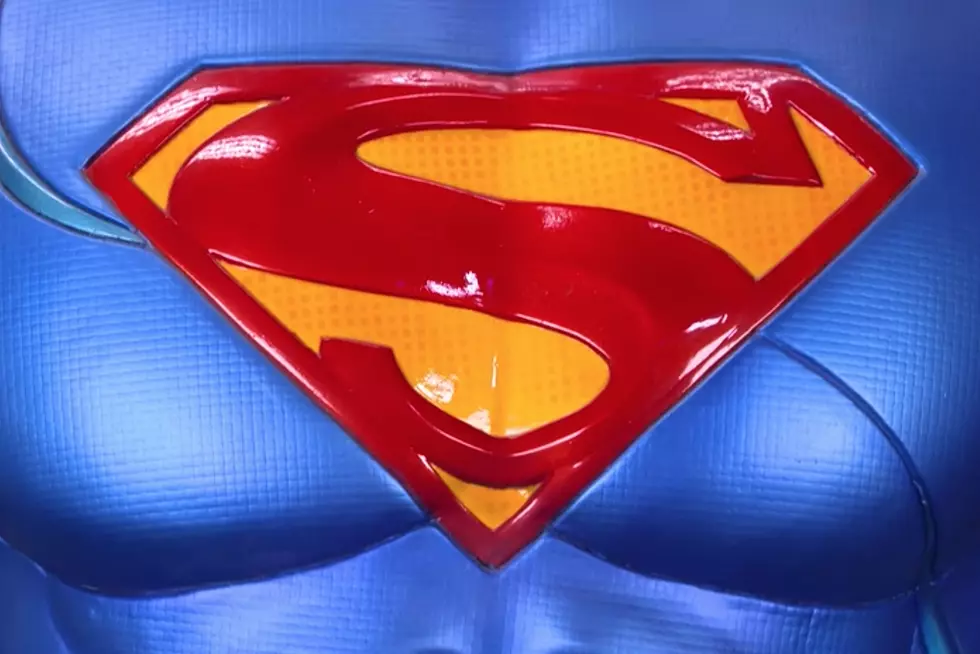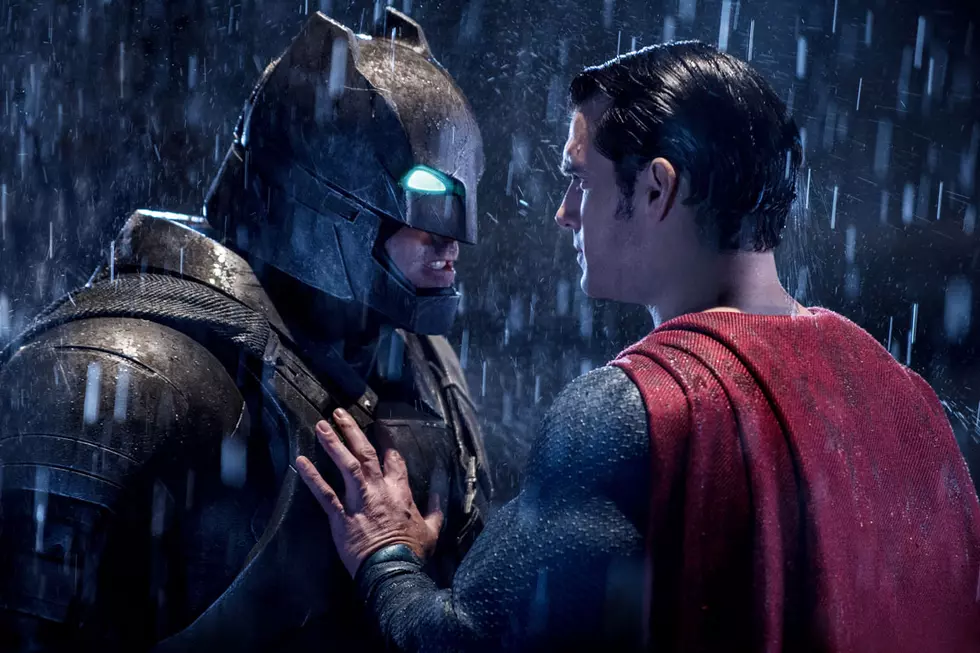
Electric Bluegaloo Epilogue: The Legacy Of The Electric Blue Era of Superman
Of all the strange transformations Superman has undergone in his 78-year history, none has been quite so derided as the year where his familiar costume and powers were replaced with a blue and white "containment suit" and a tenuous relationship with electricity. But that raises the question, was it really all that bad? Two decades later, we want to find out, so ComicsAlliance is taking a look back at the Electric Blue Era of Superman to find out not just what worked, but if anything worked. This is... Electric Bluegaloo.
This week, in the final installment of this column, we take a look back at the legacy of the Electric Blue Era, and decide once and for all if it's as bad as its reputation would lead you to believe.
It probably goes without saying that the Electric Blue Era of Superman comics isn't remembered all that fondly --- that is, in fact, the premise of the column you are reading right now --- but that doesn't mean that it was never acknowledged after everything went back to normal in the middle of 1998. As we've seen over the course of the past few months, the one thing that the Superman comics were really good at in the '90s was making sure that every story flowed into the next, building that weekly soap opera out of bits and pieces of continuity.
Admittedly, it might not always be the continuity that you wanted to see more of --- I've written before about how frustrating it is that Jimmy Olsen and Misa are clearly getting ready to embark on this grand adventure into Jack Kirby weirdness that never actually happens and instead just ends with Jimmy literally walking back into the Daily Planet to get his old job back --- but still. The Superman titles of the '90s didn't let their continuity go to waste, even if they were announcing that the Electric Blue powers were a weird offshoot that definitely weren't the "real" powers before the story had actually ended.
So before we get into a discussion of whether this strange year was as bad as its reputation, let's talk about how it came back.
Given how much they liked to play out consequences over the course of the weekly Superman titles, it was actually pretty surprising for me to learn that it took over a year for them to go back to this particular well --- and what's even weirder is that this callback was the last story the Superman books had before the creative teams that had been on the books for the previous five years were shuffled off to make way for a soft relaunch.
The subject of this story was Strange Visitor, a new hero who --- in the grand tradition of Kenny Braverman --- turned out to be one of Clark Kent's childhood friends. Sort of.
See, Sharon Vance was the librarian at the Smallville Public Library, but after being struck by lightning, she merged with Kismet, the guardian of reality, who showed up back in the Millennium Giants to give Superman a warning about Dominus. For some reason, this caused her to get powers similar to Superman's energy form, and since she wound up crashing down in Emil Hamilton's laboratory after they manifested, he just gave her Superman's old containment suit.
Once her initial story was resolved, Strange Visitor never really had the chance to do much. The new creative teams that arrived in mid-1999 were more interested in a back-to-basics approach to Superman, something that definitely gave the books an initial boost in interest, at least when I was reading them.
Looking back, the ongoing soap-operatic storytelling that dominated the '90s may have been rewarding for readers who had been picking up those books since the John Byrne relaunch in 1987, but unless you were willing to read one every week, they were pretty difficult to actually get into. The soft relaunch gave each book its own flavor and separated the stories... for a while, anyway. By the end of the year and "Superman Y2K," events were once again tying together pretty tightly.
But even though the Man of Energy would've made for a nice fit in a futuristic Metropolis that had been overtaken by the technology of the future, that's not the crossover that saw the return of Strange Visitor and the Electric Blue powers. No, that honor belongs to 2001's Our Worlds At War, the only crossover that might be even less remembered than Genesis.
It is, despite its pretty solid premise of a three-way alien invasion, not a good story. In fact, it's not even as good as Invasion, the story told about ten years earlier that was also about a three-way alien invasion, and that story had to overcome the handicap of prominently featuring Snapper Carr. But it does feature the death, such as it is, of Strange Visitor.
In order to give Superman the necessary power to battle Imperiex, the spacefaring villain behind the invasion, Strange Visitor essentially sacrifices her life to supercharge Clark Kent, charging him up with Electric Blue energy while he still has his normal powers. Even though it shuffled Strange Visitor off the stage in a way that pretty solidly indicated that Creative Had Nothing For Her, it's actually a pretty cool idea that tied what was then meant to be a big event back to a story that people were already shying away from.
Plus, if you've ever wanted to see Bill Sienkiewicz draw the Electric Blue costume, well, here you go:
And as an added bonus, Ed McGuinness drew Superman with both sets of powers, which is actually pretty great:
And it should be, since it was the last time anybody brought up the Electric Blue stuff for the next ten years. There may have been a mention or two somewhere, but the next time the Electric Blue Era was referenced with any kind of prominence was in 2011 --- which, makes it one of the last things to happen in that version of the DCU.
When Chris Roberson took over the "Grounded" storyline from J. Michael Straczynski, one of the many good things he did was shift the narrative away from the original premise of Superman walking across America and smugly informing people of their heart problems, and more towards Superman creating a team of allies to back him up and carry on his legacy into the future, and one of those characters was Livewire.
When Leslie Willis was first created for Superman: The Animated Series in 1997 --- which, incidentally, puts her first appearance right at the height of Superman's own Blue Period --- she was given a set of powers that essentially matched Superman's electrical abilities.
Roberson and artist Eddy Barrows put those two together, and with the reveal that Livewire wasn't evil, just kind of drunk on electricity --- and a mean drunk at that --- Superman gifted her his Containment Suit as a way of helping her regulate her powers, and brought her over to the side of good.
She did, however, change the logo, in a nice mirror of Superman doing the same thing when he first got the costume:
Unfortunately, the idea of Superman's super-team was obliterated when the New 52 rolled in three months later.
More recently, the Rebirth era's Superwoman has taken a handful of cues from the late '90s. Not only did the first issue reveal that there were actually two Superwomen --- one blue and one red, even! --- but Lana Lang's Superwoman Red turned out to have electric powers and a pretty familiar costume.
That thing came out last month, and you would not believe how hard I was laughing at the big reveal.
And, on the subject of more recent offerings, you can go to Target right now, in the Year of Our Lord 2016, and buy an Electric Blue Superman action figure as part of the Batman Unlimited line --- as the only Superman figure in that particular line. I have no idea why, but it's out there, and I kinda want one.
So no, the Electric Blue era isn't entirely forgotten, but it is safe to say that it's not remembered very fondly, which leads us to the one big question that I've been trying to answer for the past four months: Is it really that bad? And after going through the whole saga, I think I have my answer.
It's not bad. It's frustrating.
See, the problem isn't that they changed Superman, even though the endless gnashing of teeth that showed up in the letter columns would have you believe that was the only controversy going on in comics at the time. Superheroes have always existed in this weird state of mutability that masquerades as a static ideal form --- even though things always return to a back-to-basics status quo after a radical change, that baseline is always changing based on what came before.
Kryptonite, the Bottle City of Kandor, Lex Luthor as a conniving schemer and businessman, characters like Jimmy Olsen or Doomsday, those are all things that we think of as being part of Superman to some degree that evolved over time to become part of those basics that everyone is always trying to get back to, but if you go back far enough, you'll find that they were all part of a radical change.
On that front, Electric Blue Superman is no different from any of the other bizarre transformations, and inherently is no better or worse than Superman having an ant head, or being turned into a lion, or growing his hair out while comatose in a Kryptonian Gestation Matrix. It's just something that happened, value neutral, and it gave future creators plenty of stuff to play with.
Even structurally, those comics aren't bad. In fact, one of the most surprising things about reading these comics was how engaging they were, and how well they used a massive ensemble cast. So the problems don't come from poor storytelling, and they don't arise just from changing Superman's powers.
The problem is that nobody did anything with it while it was happening.
The Electric Blue saga ran for an entire year --- 50+ comic books! --- and yet, as I've written before, the only truly memorable uses of Superman's Electric Blue powers came from other comics. And listen, it's no sin to not be as good as Grant Morrison and Howard Porter's JLA, arguably one of the best runs of the '90s --- but there's so much potential here that's left untapped.
When Superman's new powers are introduced, they're radically different in almost every way. He's not physically strong, he's intangible instead of being invulnerable, and he can't even fly --- the original idea back in that first month is that he zaps from place to place like a bolt of lightning.
And yet, all of that slides back almost immediately to stories where the new powers just approximated the old ones. Heck, Superman could turn invisible and shape-shift in these comics, and after those powers are introduced, they are never mentioned again.
Make no mistake, there are genuinely great creators working on these comics --- Stuart Immonen, Louise Simonson, Jon Bogdanove, Dan Jurgens, Tom Grummett, and Karl Kesel were among the best DC had to offer at the time --- but for some reason, aside from the obvious visuals, they just don't seem interested in highlighting what makes this version of Superman different. And that, more than anything else, far more than the aesthetics or the changes, is what hurts these stories. And I wonder if part of that might be because of that big soap opera style that I mentioned earlier.
As much as I enjoy the large supporting cast and the interweaving stories, it's pretty easy to argue that one of the biggest problems with the book is that there's just not enough Superman in them. I'd argue that having Lois, Jimmy, and Lex --- even the Contessa and Lena --- are downright necessary, but did we need as much of Ron Troupe's love life as we got over the course of this year? Did we need to see Simone DeNiege trying to drive up sales on the Daily Planet? Again, we had over fifty comic books to deal with here, and those were plots that just went nowhere over the course of an entire year.
Even the stories that did go somewhere tended to run too long and have an anticlimactic ending. Dirk Amstrong's tortured relationship with his daughter Ashbury goes on forever, and Jimmy Olsen on the lam from Intergang --- which goes for, what, six months? Eight? --- just ends with Misa zapping Jimmy with a ray-gun that makes them forget about him. That's a fun ending, but it's a pretty blunt one, and again, we never quite get the adventure that the setup promises.
And all of that, the slow pace, the distractions from Superman himself, the lack of using Superman's new powers, it all speaks to the one underlying problem in these comics: Untapped potential.
More From ComicsAlliance









